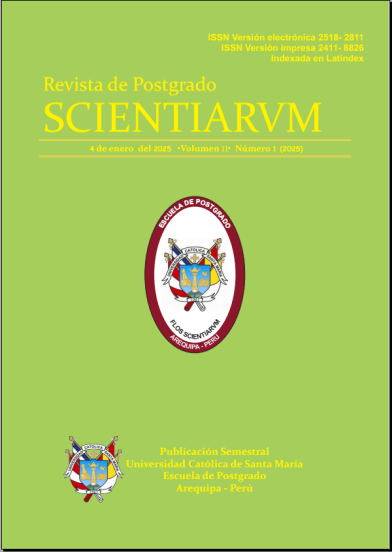ASOCIACIÓN ENTRE EL TRATAMIENTO ANTIRRETROVIRAL DE GRAN ACTIVIDAD Y LA PATOLOGÍA BUCAL EN PACIENTES CON VIH-SIDA DEL HOSPITAL REGIONAL HONORIO DELGADO. AREQUIPA.2005-2009
Gabriela Alejandra Lazo Meneses1
(1)Universidad Católica de Santa María
RESUMEN: El presente estudio tuvo como objetivo determinar la asociación entre el tratamiento antirretroviral de gran actividad y la patología bucal en pacientes con VIH-SIDA adherentes a la terapia TARGA. Materiales y métodos: Se realizó un estudio observacional, retrospectivo y de corte longitudinal. En cuanto al universo, fueron evaluadas 71 historias clínicas de pacientes con VIH-SIDA adherentes a la terapia TARGA del Hospital Regional Honorio Delgado de Arequipa, 36 (50.70%) correspondieron a varones y 35 (49.30%) a mujeres. Se dividieron en 4 grupos según el período de adherencia: un primer grupo formado por las historias clínicas de los pacientes adherentes a la terapia TARGA entre el periodo 2005-2009 (5 años), un segundo grupo entre el período 2006-2009 (4 años), un tercer grupo entre el período 2007-2009 (3 años) y un cuarto grupo entre el período 2008-2009 (2 años). Se efectuó un análisis bivariado, de naturaleza cuantitativa utilizando como técnica de estadística descriptiva, la distribución de frecuencias absolutas y relativas y como técnica de estadística inferencial, la prueba de chi cuadrado de independencia para precisar la relación entre las variables. Conclusiones: En cuanto a la asociación entre el tratamiento antirretroviral de gran actividad y la patología bucal en pacientes con VIH-SIDA adherentes a la terapia TARGA, sólo en dos grupos hubo una disminución del número de pacientes con lesiones orales: en el grupo de pacientes que recibieron la terapia TARGA entre el período del 2005-2009 (5 años) observándose que al iniciar la terapia un 22.54% presentaba lesiones bucales y al quinto año de tratamiento disminuyó a 16.90%. Del mismo modo, en el grupo de pacientes adherentes a la terapia TARGA entre el período 2007-2009 (3 años), se observó que al iniciar la terapia un 21.13% presentaba lesiones bucales y al tercer año de tratamiento disminuyó a 19.72%. Las patologías bucales más frecuentes fueron las enfermedades infecciosas, siendo las de tipo micóticas (candidiasis) y las bacterianas (caries dental) las más predominantes; sólo se presentó un caso de sarcoma de Kaposi. Sin embargo, al aplicar la prueba estadística de chi cuadrado en los 4 grupos no se observaron diferencias estadísticamente significativas (p0.05) entre el Tratamiento Antirretroviral de Gran Actividad y la Patología Bucal presente en los pacientes con VIH-SIDA adherentes a la terapia TARGA.
Palabras Clave: Infección por VIH, Síndrome de Inmunodeficiencia Adquirida SIDA, Tratamiento Antirretroviral de Gran actividad TARGA, Patología Bucal.
ABSTRACT: The aim of this study was to determine the association between highly active antirretroviral therapy and the oral pathology in patients with HIV-AIDS adherent to HAART therapy. Materials and methods: The medical records were reviewed, performing an observational, retrospective and longitudinal study. 71 medical records of patients with HIV-AIDS adherent to HAART therapy at the Hospital Honorio Delgado-Arequipa were evaluated, 36 (50.70%) were males and 35 (49.30%) were women. The medical records were divided into four groups according to period of adherence: a first group of the medical records of patients adherent to HAART therapy between the period 2005-2009 (5 years), a second group between the period 2006-2009 (4 years), a third group between the period 2007-2009 (3 years) and a fourth group between the period 2008-2009 (2 years). Was performed a bivariate analysis, using as technique of descriptive statistics, the distribution of absolute and relative frequencies and as technique of inferential statistic, chi-square of independence test for the relationship between the variates. Conclusions: The association between the highly active antirretroviral therapy and oral pathology in patients with HIV-AIDS adherent to HAART therapy, only in two groups were a decrease in the number the patients with oral lesions, the group of patients receiving HAART therapy between the period 2005-2009 (5 years) showing that at the beginning of therapy an 22.54% had oral lesions and the fifth year of treatment
Revista Seleccionada
Enero 2017 Volumen 3 - Número 1 P 21-26
DOI: 10.26696/sci.epg.0043
Enlaces
MINIREVIEW
ENFOQUE BIOLÓGICO Y ACELERACIÓN DEL MOVIMIENTO DENTAL ORTODONCICO: REVISÓN DE LITERATURA
CIENCIAS SOCIALES Y HUMANIDADES
LA EDAD COMO LÍMITE AL EJERCICIO DE LA DOCENCIA UNIVERSITARIA ¿REAL O LEGAL?
VALORES GERENCIALES EN LAS ORGANIZACIONES
Ley Nº 29230, OBRAS POR IMPUESTOS
UNA EXPERIENCIA: LAS EMPRESAS FAMILIARES Y LA TERCERA GENERACIÓN
CIENCIAS BIOLÓGICAS Y DE SALUD


